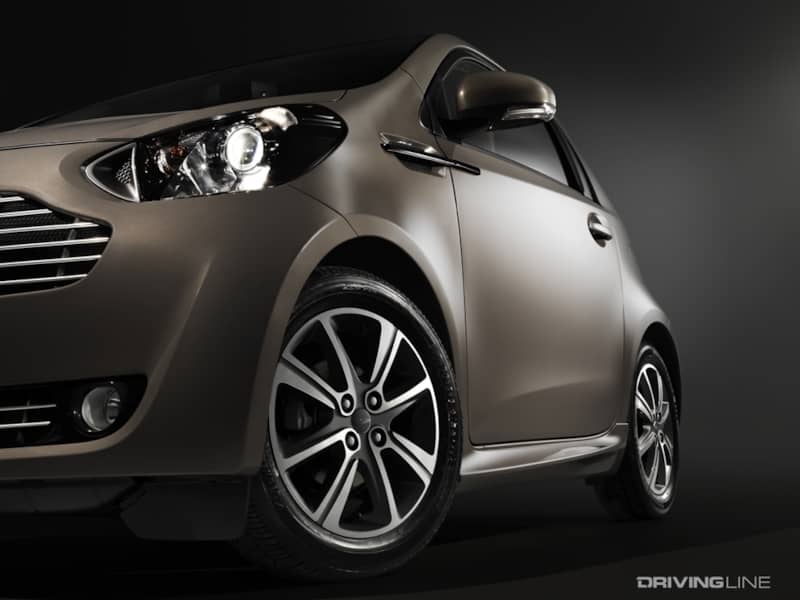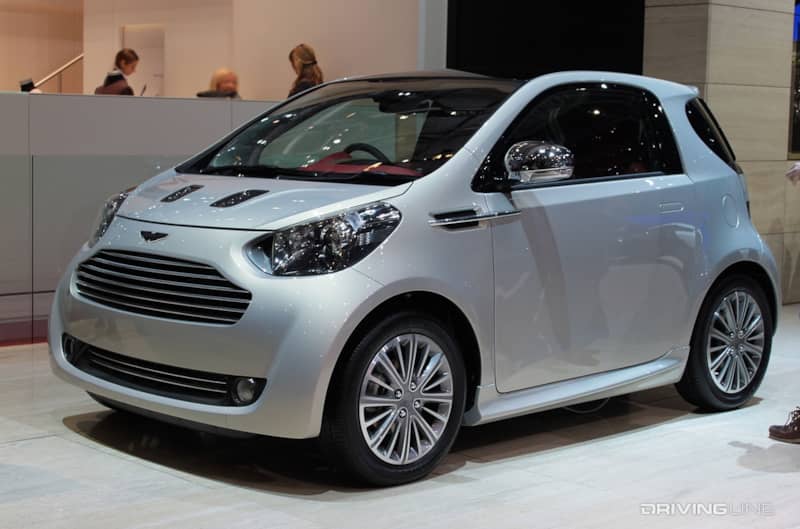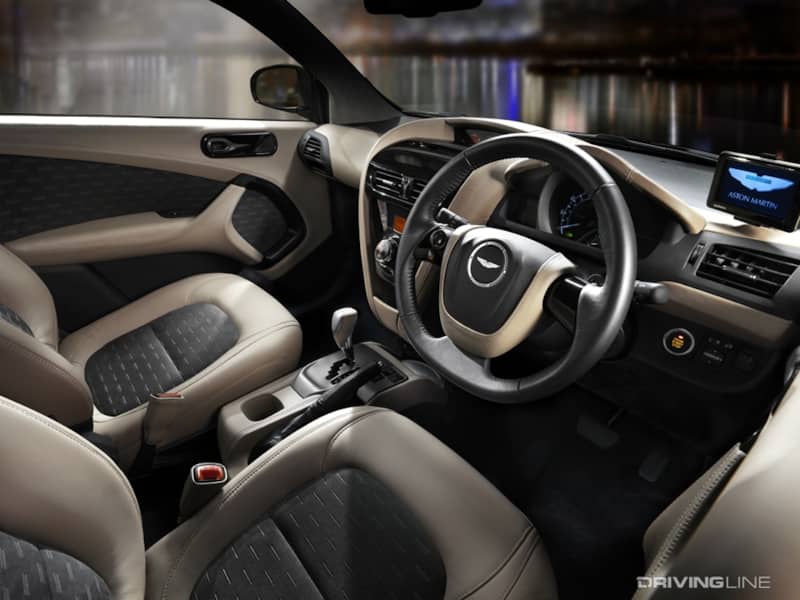The Short Life And Sad Times Of The Aston Martin Cygnet
Every once in a while, an automaker spits out a vehicle that never should have seen the light of day—a car that is so out of step with the badge on the hood that it is instantly doomed to be the butt of jokes for the duration of its presence in the showroom, shunned by loyalists and regarded with curiosity, at best, by casual shoppers.
Sometimes, these automobiles are the result of corporate edicts from executives or boards detached from the realities of the market, while others are poorly-planned products that missed their mark but had to be sold in a bid to soak up some of the millions of dollars invested in their development.

And then there is the Aston Martin Cygnet: a car that came almost out of nowhere to tackle a seemingly insurmountable regulatory problem that threatened the very core of the famed British brand.
Company In Crisis
In many parts of the world car companies are forced to comply with laws aimed at curtailing the overall pollution produced by their wares. In some jurisdictions the requirement is to meet a fleet fuel economy target (that is to say, add up the efficiency of each model built and then divide it to arrive at an average) or face considerable financial penalties.

In Europe the focus shifts from consumption to emissions—at least from an enforcement perspective, as the two are inextricably linked. In 2009, facing the knowledge that the European Union was set to enact a strict set of tailpipe regs for 2012, Aston Martin took a quick look at its existing catalog of thirsty high end sports cars and realized that it didn't have a hope of beating the average required to continue doing business as usual.
The solution was, on the surface, simple. Aston Martin had to introduce a new, fuel-sipping option to, at the very least, skirt around the emissions issue without having to touch the luxury cars for which it was famous. Unfortunately, given that at the time the it was a small independent company without the resources required to hastily develop an all-new model from the ground up, answering the challenge in-house seemed insurmountable.
Strange Bedfellows
Enter Toyota. Realizing that the only way it could get through the crisis was to tag in an external supplier, Aston Martin approached the Japanese giant about purchasing the rights to market one of its smallest, most frugal vehicles: the iQ, which was sold as a Scion in the United States and a Toyota everywhere else.

At first blush, the scenario was absurd. The iQ was a tiny two-seater in the vein of the Smart Fortwo, a city car aimed at cost-conscious commuters who didn't care about much else other than getting from A to B as cheaply as possible. It featured a tiny 1.3-liter four-cylinder engine that barely squeezed out 97 horsepower, matched with either a continuously-variable automatic transmission or a six-speed manual. Either way, 60-mph arrived in just over 11 seconds, which was hardly in keeping with Aston Martin's reputation.
Still, the Brits did their best to slather lipstick on a pig. Between 150 and 175 hours of "upgrading" was invested into each and every iQ before it was rebadged as the "Cygnet," a word that meant swan but might as well have stood for ugly duckling.

Where did all that effort go? Certainly not the mechanical bits—those remained the same so that the car could help the company with its C02 requirements. No, instead the baby Aston came with unique body panels (everything but the roof), a revamped interior with additional sound insulation, cloth and wool carpeting, and unique leather upholstery. Toyota's switchgear largely remained in place, however, adding a hint of cheap to the supposedly-posh hatchback. Also not helping? The handheld Garmin navigation system tacked to the dash.
The Path To Resurrection
Predictably, the Cygnet's reception was less than resounding. Priced at £30,995, or nearly $50,000 USD, when it first went on sale in 2011, finding buyers willing to pay more than double what they would for a fully-loaded iQ proved to be almost impossible. Rosy sales estimates of 4,000 units per year quickly evaporated when, in the final analysis, less than 150 examples were sold during the car's entire three-year lifespan (all in the U.K.).

In retrospect, it's easy to see what went wrong. There was clearly no market for the Cygnet outside of existing Aston Martin buyers intrigued by the novelty of an underpowered, over-primped Toyota in drag. At the same time, bargain-oriented city car buyers were never going to stop in at an AM dealership—and if they did, it wouldn't be to empty their savings account on a car that was all pomp and no circumstance when they could easily match its charms for significantly less from any number of competitors.
The company claimed that it ended Cygnet sales because its overseas partner was ceasing production of the iQ, but that was a merciful coincidence that saved AM execs from having to admit that it had completely misjudged the situation. The financial world would not be so kind: in 2013 CEO Ulrich Bez left his position and was replaced by Andy Palmer, and the following year reported a massive loss tied to flagging sales across the board.

A serious strategic rethink would follow, eventually pulling Aston Martin back onto the path to profitability, and an eventual IPO in 2018. In a way, then, while the Cygnet might have been a complete failure from a sales perspective, it did play a crucial role as the death knell for the old way of doing things at the company, illuminating the need for fresh blood, new ideas, and a bolder approach to regaining its footing.











